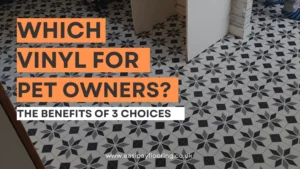
Please Note: We’re currently out of stock of LVT, while we switch supplier, we’ve reduced the cost of SPC flooring to the price of our LVT.

Get In Touch:
03303 332360


Carpet stains are an inevitable part of home life. From accidental spills during a dinner party to the everyday wear and tear of family activities, these marks can detract from the beauty and comfort of your living spaces. While the market is flooded with chemical cleaners that promise spotless results, more homeowners are turning to natural solutions. Among these, baking soda stands out as a powerful, eco-friendly alternative. Let’s explore how this humble kitchen staple can tackle various carpet stains, offering a safer approach to cleanliness.
Baking soda, or sodium bicarbonate, is more than just a leavening agent for your cakes. Its natural properties make it an excellent choice for removing a wide array of carpet stains, including:
Opting for baking soda over harsh chemicals is beneficial for several reasons:
A general rule of thumb for most stains is to create a paste using a 2:1 ratio of baking soda to water. This consistency can be adjusted depending on the stain’s nature and the carpet type.
A thinner mixture (more water, less baking soda) can be used for lighter stains or for a quick refresh. This solution can be gently worked into the carpet fibres with a soft brush or cloth.
For more stubborn stains, a thicker paste (more baking soda, less water) can be applied directly to the stain. The paste should be left to dry completely, which may take several hours or overnight. Once dry, the residue can be vacuumed up, lifting the stain from the carpet fibres.
You might also like: How to remove carpet stains with vinegar
In conclusion, Baking Soda provides a diverse powerful cleaning material that’s low cost, environmentally friendly, safe and you likely already have it on hand! If you don’t already have a tub in the cupboard, it might be time to include one in the weekly shop! Use Baking Soda to tackle stains while keeping up with regular carpet maintenance.
If you’ve got stubborn stains that chemicals just aren’t budging, why not give us a try and replace your flooring? At Easipay Flooring we offer Carpets, Laminate, Vinyl, SPC and LVT flooring at affordable prices and we even let you break down the cost into weekly, fortnightly or monthly payment plans too, completely interest free! Sound good? Tap the button below to get set up a home visit to see our samples and get your free quote!
Baking soda is generally safe for most types of carpet fibres, but it’s always a good idea to do a spot test in an inconspicuous area first to ensure it doesn’t cause any discoloration or damage.
For most stains, leaving the baking soda paste on the stain until it fully dries, which can be several hours or overnight, is effective. This duration allows it to absorb the stain thoroughly.
Baking soda might struggle with extremely old or set-in stains that have dyed the carpet fibres, such as ink or dye stains. In these cases, a professional cleaner might be necessary.
Yes, mixing baking soda with vinegar can create a bubbling reaction that helps lift stains. Apply the baking soda first, then dab or spray vinegar on top for tough stains.
Baking soda can be used as often as needed since it is non-abrasive and not harmful to most carpet types. However, always ensure it is thoroughly vacuumed up after each application.
If there’s a residue, vacuum the area again. If the residue persists, use a damp cloth to blot the area and then dry it thoroughly.
Baking soda neutralizes odours by absorbing them, rather than merely masking the smell like some chemical deodorizers.
Yes, baking soda is non-toxic and safe to use in homes with children and pets. Just ensure it’s vacuumed up completely after use to prevent ingestion.
Yes, but first blot as much of the liquid as possible. Then apply the baking soda paste to address any remaining stain and odour.
Keep it in an airtight container in a cool, dry place to maintain its efficacy. Moisture can cause baking soda to clump and lose its effectiveness.
Baking soda is versatile and can be used on many types of hard surfaces, but avoid using it on delicate materials like silk or leather without proper guidance.
Baking soda can help absorb moisture and deodorize areas affected by mould, but it does not kill mould spores. For mould infestations, consult a professional.
If odours persist, it may indicate a deeper issue like mould or mildew beneath the carpet, requiring professional cleaning.
It’s not recommended to use baking soda in carpet cleaning machines as it can clog the components. Use it only for direct application to stains.
Yes, baking soda is environmentally friendly, as it is a natural substance that doesn’t contain volatile organic compounds (VOCs) or phosphates, making it a safe choice that doesn’t contribute to water pollution.
Contact Us!